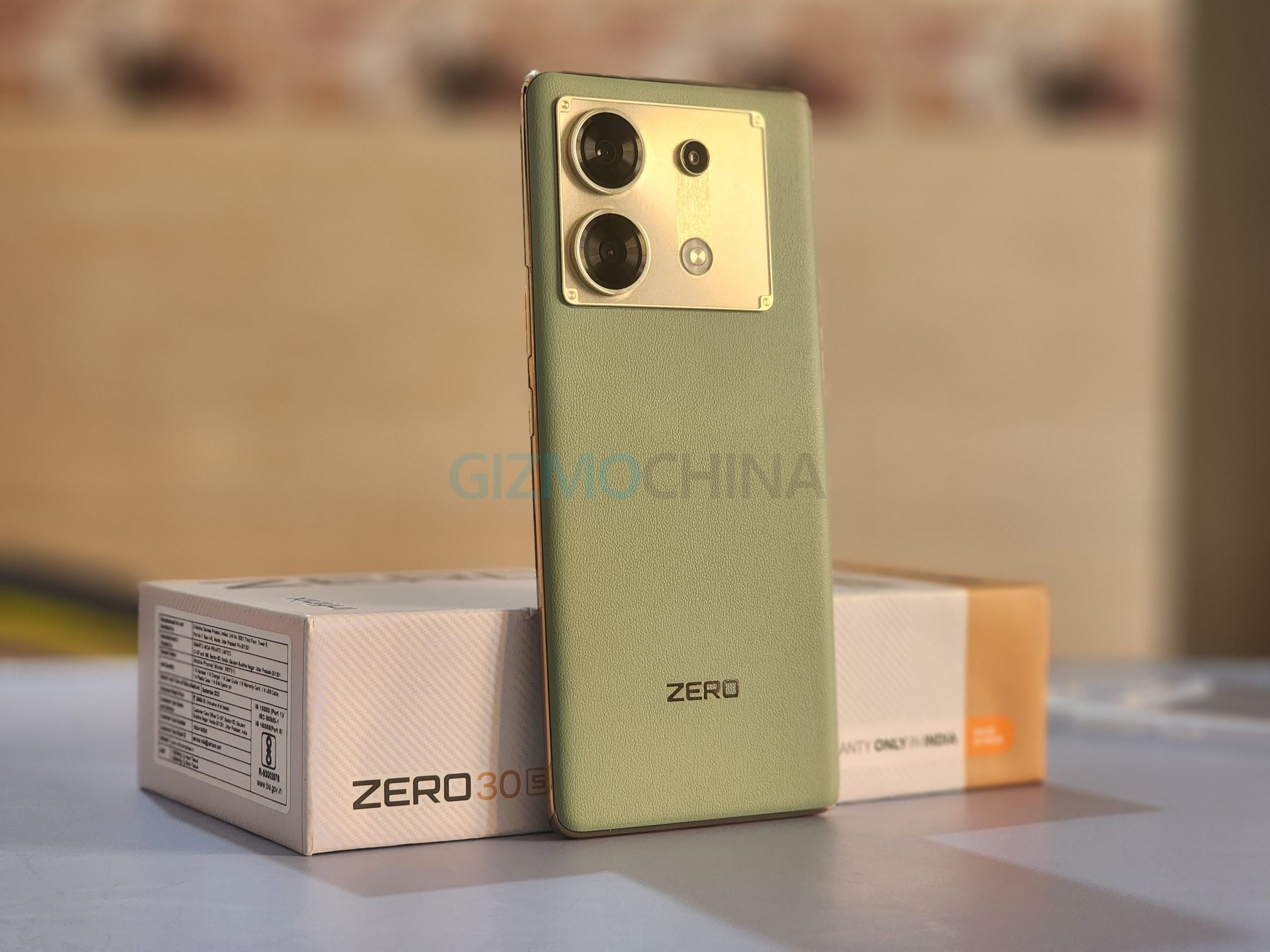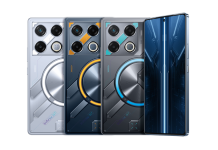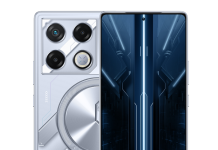After launching the Infinix GT 10 Pro, a gaming phone priced under Rs 20,000, Infinix is back with a new phone called the Zero 30 5G for the Indian market. It is designed to compete with phones priced between Rs 20,000 and Rs 25,000 in India. Being a Zero series phone, the Zero 30 5G sports an impressive design with a leather back and a curved-edge display on the front, as well as cameras. One of the major highlights of this smartphone is that it comes with a 50-megapixel front-facing camera that can shoot 4K videos at 60fps, making it ideal for vlogging in its price segment. Here is a review of the Zero 5G to learn more about what to expect from it.
Infinix Zero 30 5G review: What’s in the box?

Here is a list of items that are included in the retail package of the Infinix Zero 30 5G:
- Infinix Zero 30 5G handset
- 68W charger
- USB-A to USB-C cable
- TPU case
- SIM ejector tool
- Safety Guide
- Quick Guide
Design and Display
| Dimensions | Display | |
| Size – 164.51 x 75.03 x 7.9mm | 6.78-inch AMOLED curved-edge display | 100% DCI-P3 color gamut |
| Weight – 185 grams | 1080 x 2400 pixels (FHD+) | 10,000,000:1 contrast ratio |
| IP53 rating | 20:9 aspect ratio | Widevine L1 |
| 144Hz refresh rate | Gorilla Glass 5 protection | |
| 3600Hz touch sampling rate | 92% screen-to-body ratio | |
| 2160Hz PWM dimming | ||
| 950 nits brightness |
The Infinix Zero 30 5G has a premium feel thanks to the curved-edge AMOLED display on the front and a vegan leather back (only on the Rome Green) variant. The Golden Hour and Purple Fantasy (available in other markets) have Gorilla Glass 5 panels on the front and back. Like the front, the back panel of the phone also tapers towards the edges. It has a polycarbonate frame with a metallic sheen. Measuring 7.9mm in thickness and weighing around 185 grams, the Zero 30 5G feels premium and has good weight distribution. It has an IP53 rating, meaning it offers splash resistance. So yet again, Infinix has done a good job designing this phone.
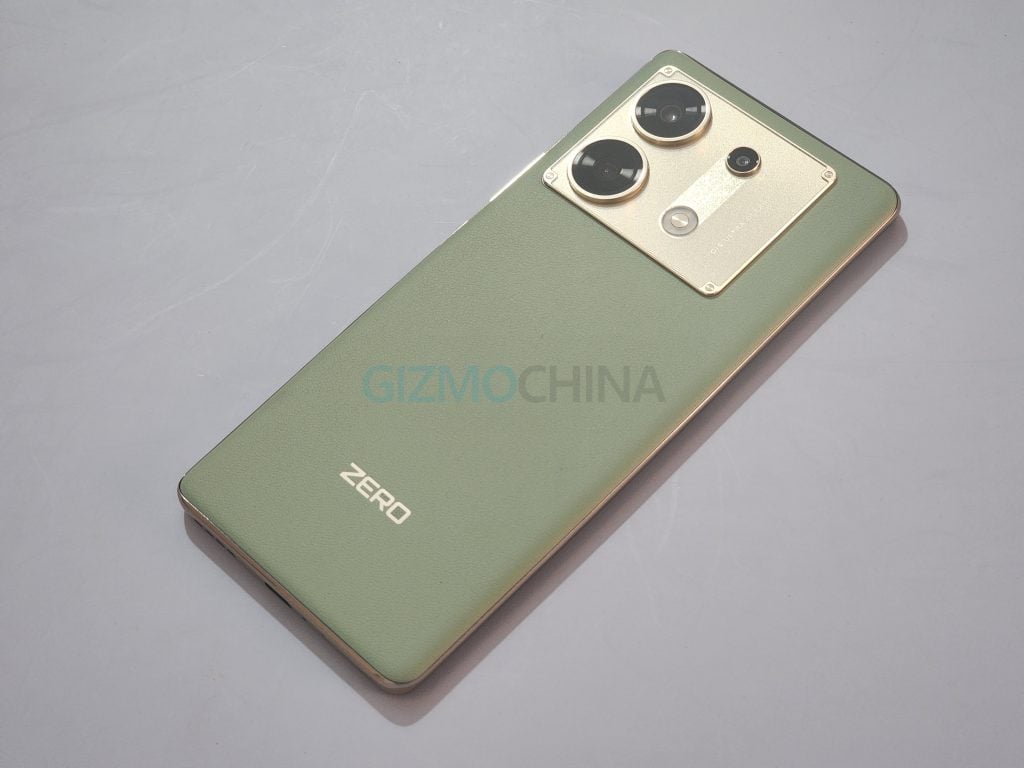

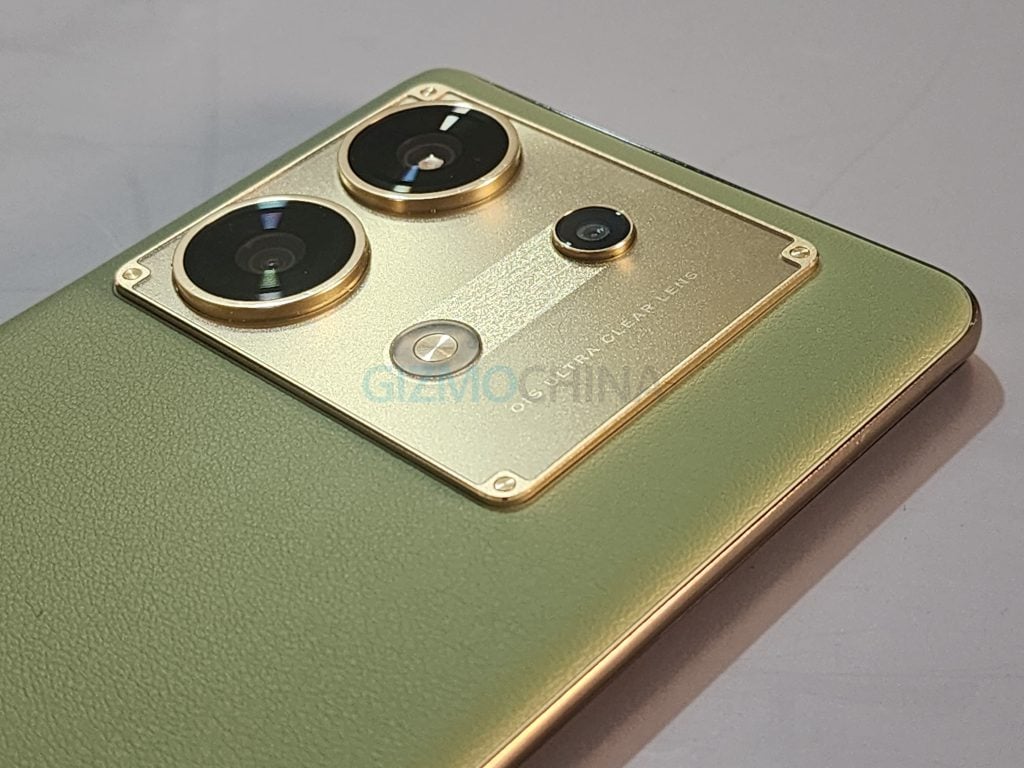

Around the edges, the Zero 5G has a volume controller and a power button on the right, a noise-cancelling microphone and a speaker grille placed on the top, and the bottom edge has a SIM slot, a microphone, a USB-C port, and another speaker. There is nothing on the left spine, while an earpiece is positioned in the top bezel just above the camera punch-hole. The top bezel also houses a dual-LED flash unit in the left corner. The device wobbles when placed on a flat surface because of the large camera module on the back.
The Infinix Zero 30 5G has a 6.78-inch AMOLED panel that offers up to 144Hz refresh rate, 2160Hz PWM dimming, and an in-screen fingerprint sensor. With a theoretic peak brightness of up to 950 nits, the Zero 30 5G offers a comfortable viewing experience under direct sunlight. There are two DCI-P3-based color profiles on the device, such as Original and Bright. The latter offers a bit more saturated color. There is a color temperature onboard for switching between options like Cool color, Default, and Warm color.
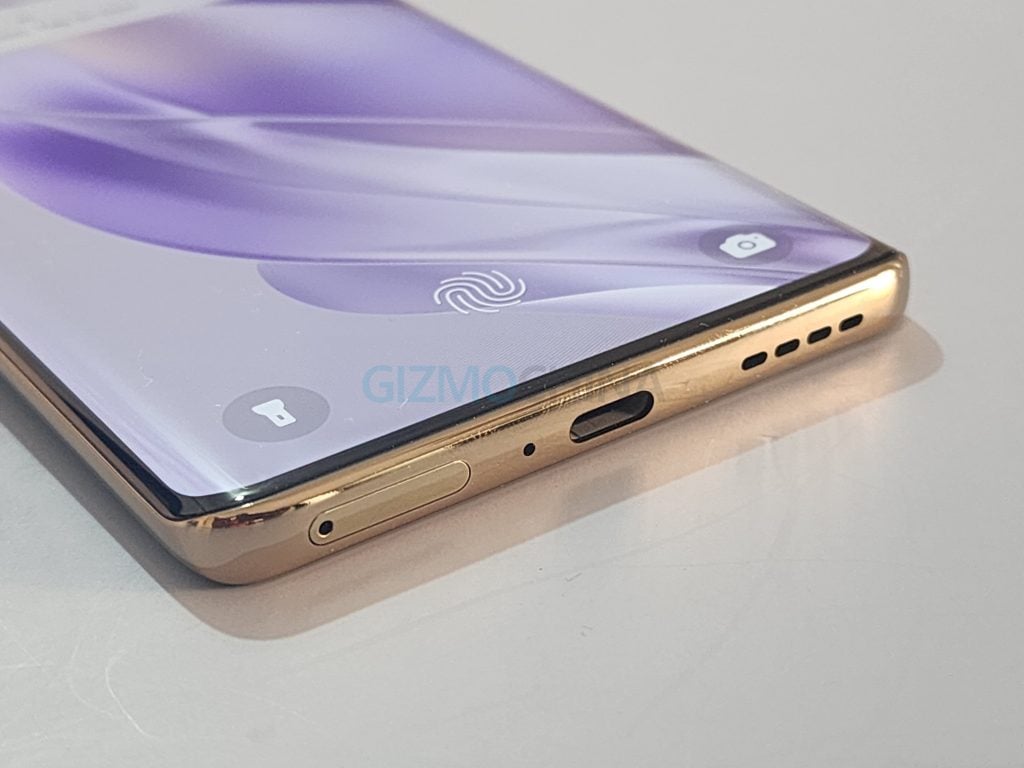

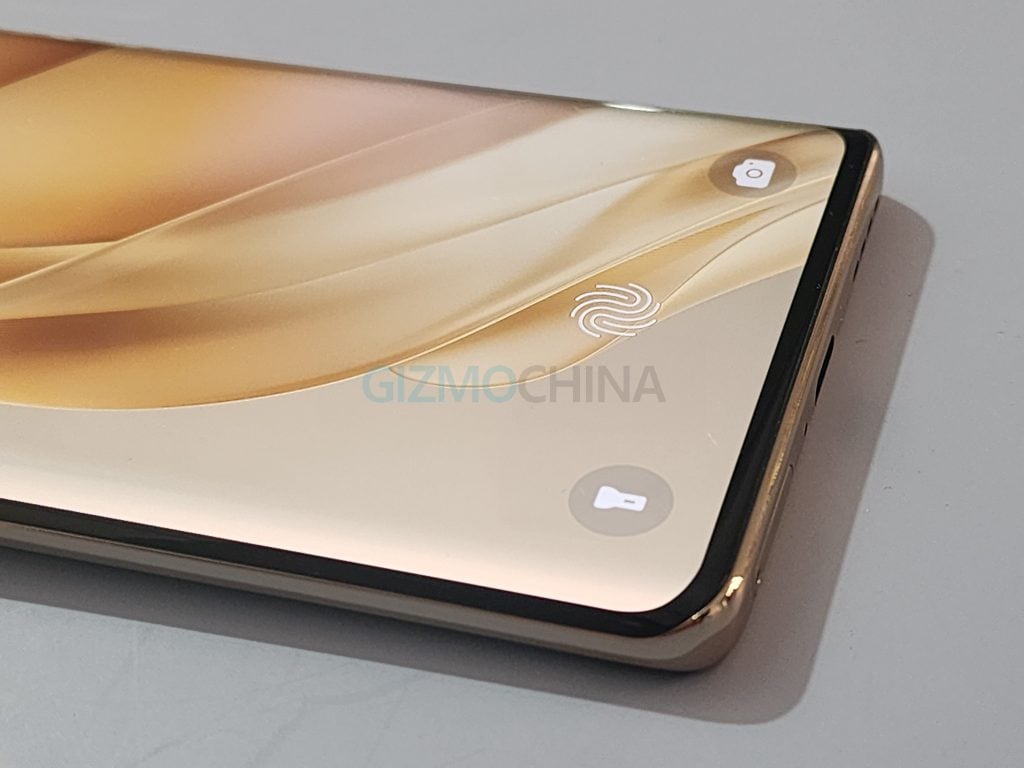
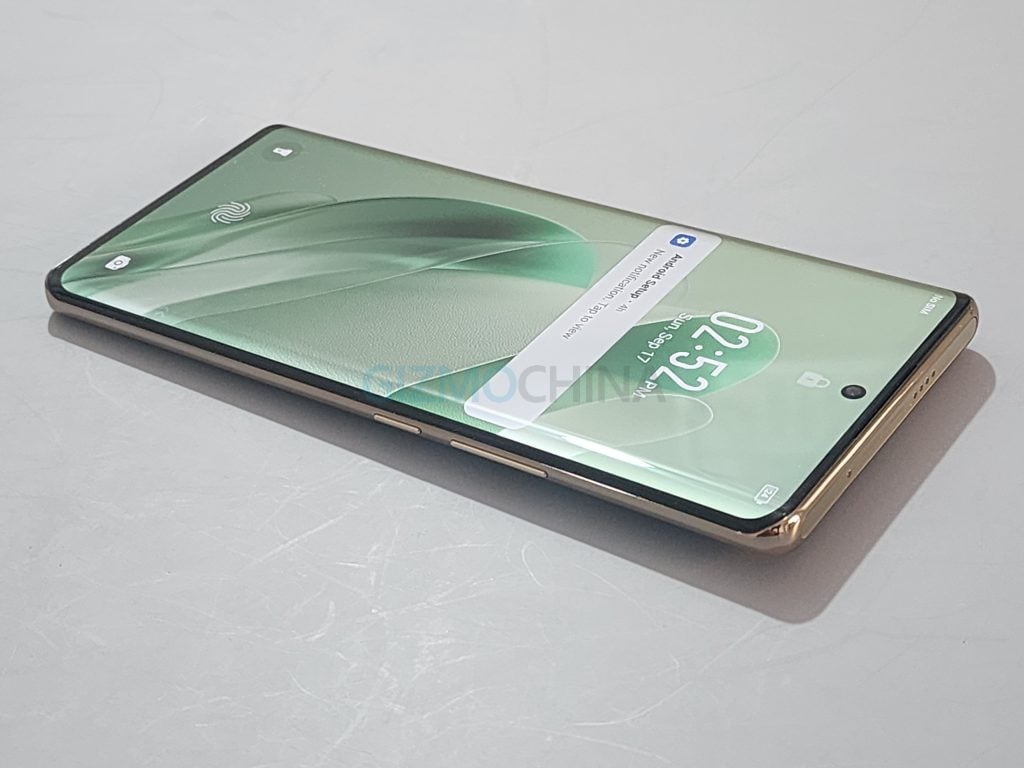
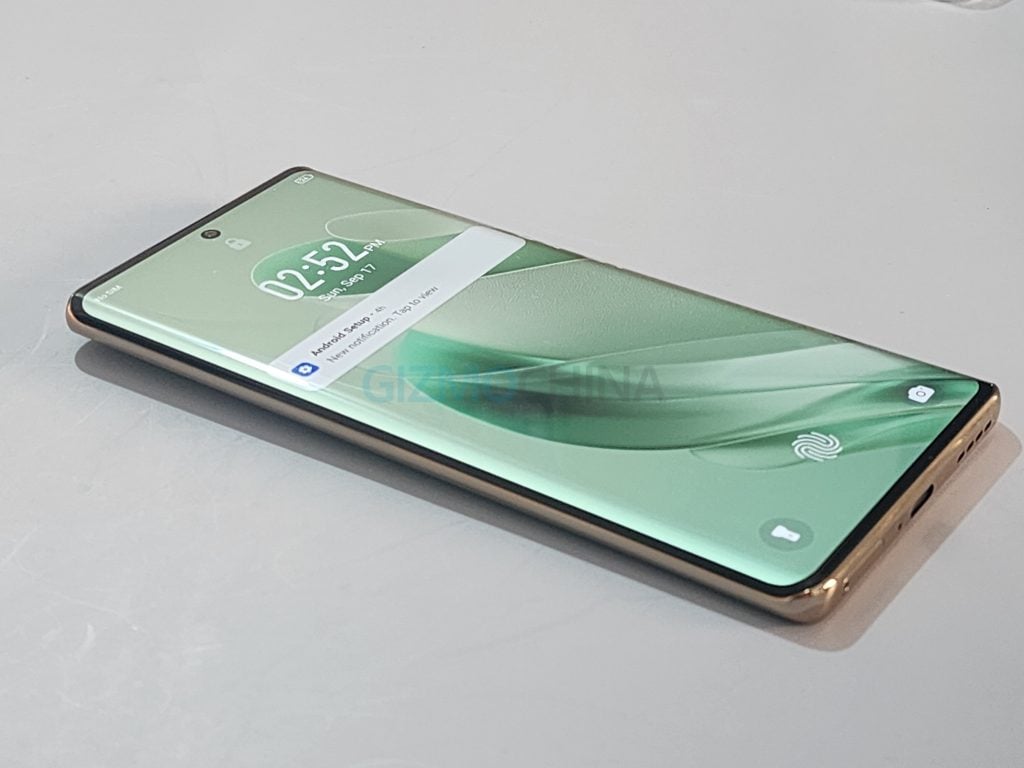
The Infinix Zero 30 5G has 60Hz, 120Hz, 144Hz, and Auto-Switch refresh rate options. I would prefer using Auto-Switch as it can adjust the refresh rate according to what’s being displayed instead of staying at 120Hz or 144Hz when it is not really required. The Zero 30 5G supports Widevine L1 as well as decode HDR formats, such as HDR10, HDR10+, and HLG, but it does not have an HDR-compliant display. It does not have a feature called accidental touch protection. Accidental touch protection is a feature that prevents the screen from registering touches when it is not being held properly. This is important for curved-edge displays, as they are more prone to accidental touches.
Performance and Software
| MediaTek Dimensity 8020 | 5,000mAh battery |
| 8GB / 12 GB of LPDDR4x RAM | 68W charging |
| 256GB of UFS 3.1storage | Android 13 OS, XOS 13 |
| 9GB of virtual RAM | 11-layer VC cooling unit |
The Infinix Zero 30 5G is powered up by the MediaTek Dimensity 8020, which is not a new processor but a renamed version of the 6nm Dimensity 1100 launched in 2021. Nevertheless, the overall performance of the device is comparable to Qualcomm’s Snapdragon 7-series chips, such as Snapdragon 778G and 778G Plus. The only other phone that has the D8020 chip is the Motorola Edge 40, which currently has a starting price of Rs 29,999 in India. The device offers 8 GB / 12 GB of LPDDR4x RAM, up to 9 GB of virtual RAM, and 256 GB of UFS 3.1 storage. My review unit has 12 GB of RAM and 256 GB of storage.
There is a 5,000mAh battery under the hood of the phone, which comes with support for 68W USB PD 3.0 charging. The phone takes around 55 minutes to achieve a full charge and can easily last for more than 24 hours on a full charge, considering that it is not being used in 144Hz refresh rate mode but in Auto-Switch or lower options. For heat dissipation, the device is equipped with a vapour chamber cooling system with 11 layers of cooling material. During extended gaming sessions, the device does experience a slight increase in temperature. As far as gaming performance is concerned, games like Call of Duty: Mobile can be played in the highest graphics setting.

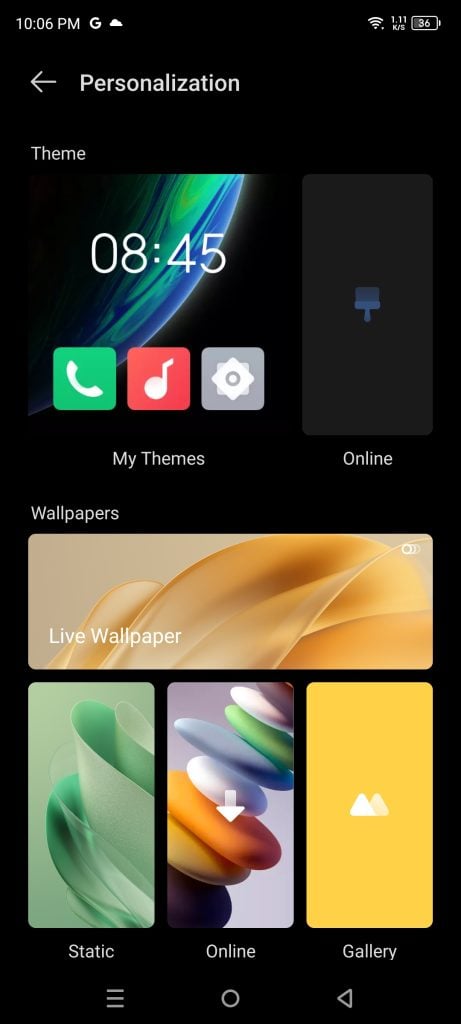

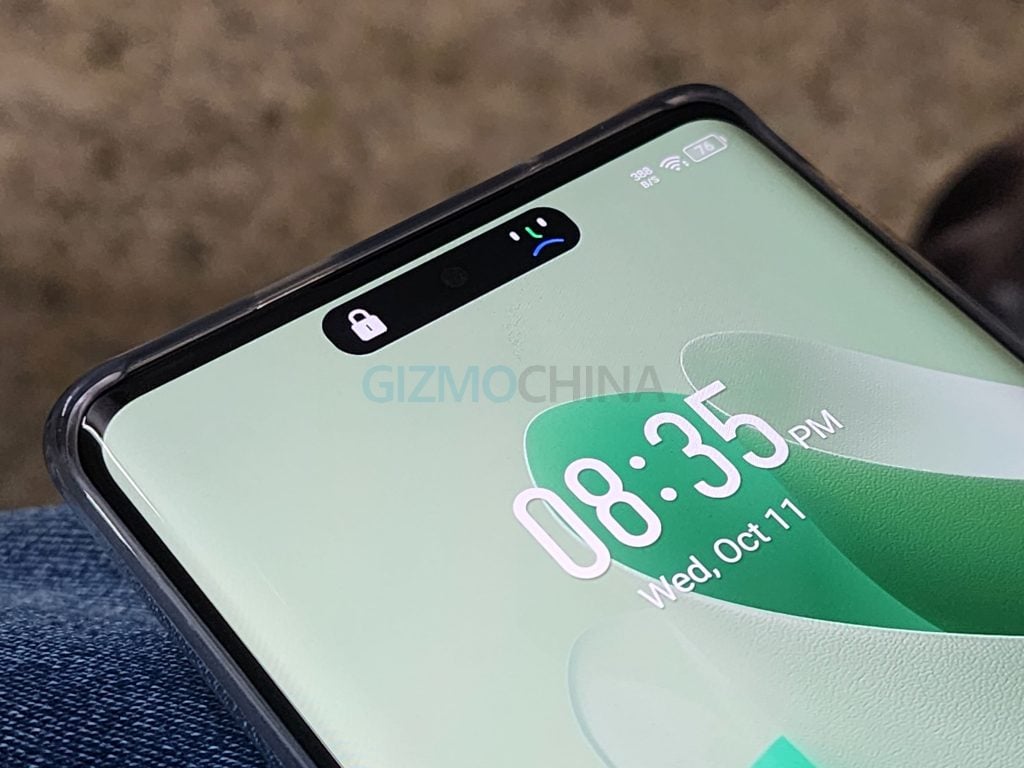
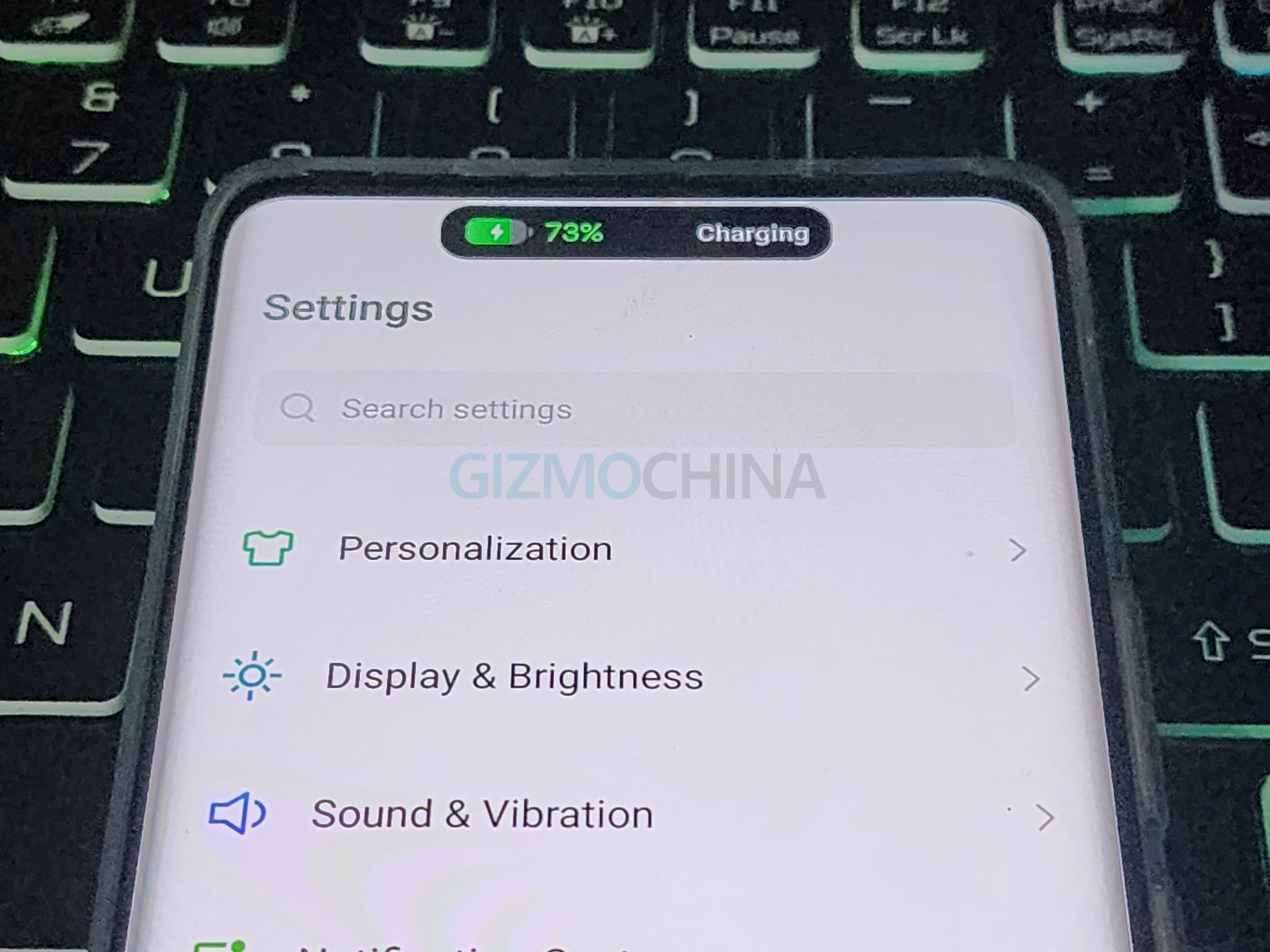
The Zero 30 5G ships with Android 13, which has a layer of XOS 13 on top. There are a lot of preinstalled apps, but it does not show annoying notifications. Overall, the software experience is smooth with a lot of customization options and special functions, such as Always-on Display features, gestures, multi-window, smart panel, x clone, video assistant, peek proof, game mode, and kids mode. A new software update has also introduced the Magic Ring notification feature, which works like Dynamic Island on iPhones. It is confirmed to have received an Android 14 OS upgrade and two years of security updates. Ideally, Infinix should have offered two years of OS upgrades for the Zero 30 5G, like some of the other phones in the same price range.
Here is a look at how it performed on benchmark apps.
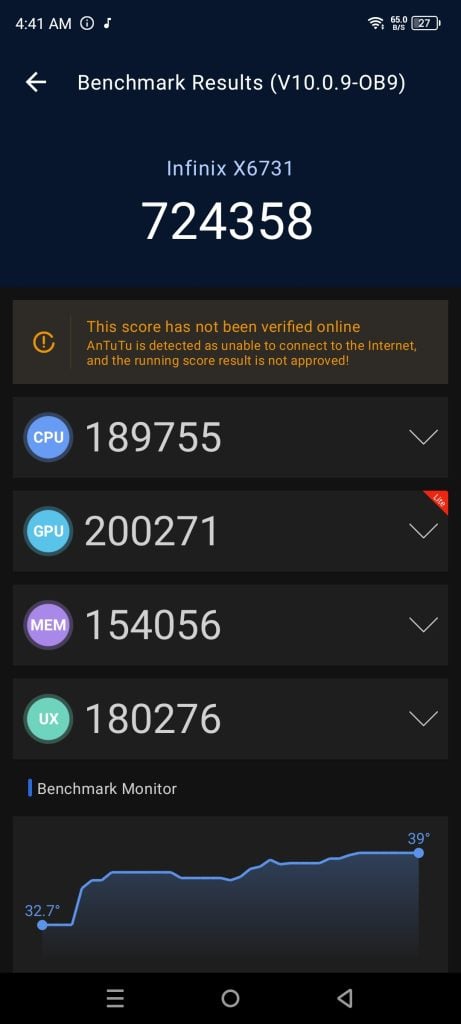


Photography and Other Features
| Rear Camera | Other features | |
| 108MP Samsung ISOCELL HM6 sensor | In-display fingerprint scanner | Dual stereo speakers with DTS Audio, Hi Res Audio |
| 13MP Samsung S5K3I6 ultra-wide lens | Face unlock | 3.5mm audio jack |
| 2MP GalaxyCore GC02M1 depth sensor | Wi-Fi 802.11ax | Vibration motor |
| Quad-LED flash | Bluetooth 5.2 | NFC |
| 5G (n1/n3/n5/n7/n8/n12/n20/n28/n66/ n38/n40/n41/n77/n78) | FM radio | |
| Front Camera | GPS | |
| 50MP Samsung ISOCELL JN1 selfie camera | USB-C | |
| LED flash |
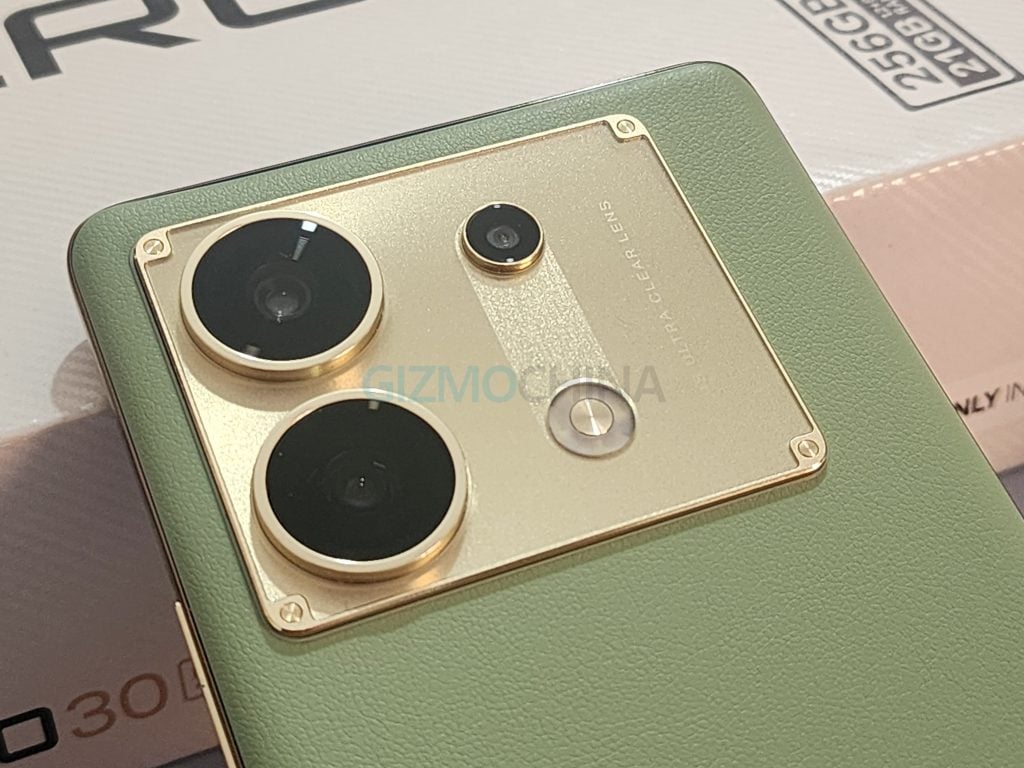
The camera app of the Infinix Zero 30 5G has modes such as Film, Video AI Cam, Video, Portrait, Super Night, Slow Motion, Time-lapse, Shor Video, Dual Video, AR Space, Sky Shop, Pro mode, Panorama, and Documents. The top bar of the camera app gives access to camera settings, flash, 108MP mode, aspect ratio, filters, and one new thing that can be seen on the camera app is the option to disable AI, which I believe is one of the features Infinix users have been asking for.
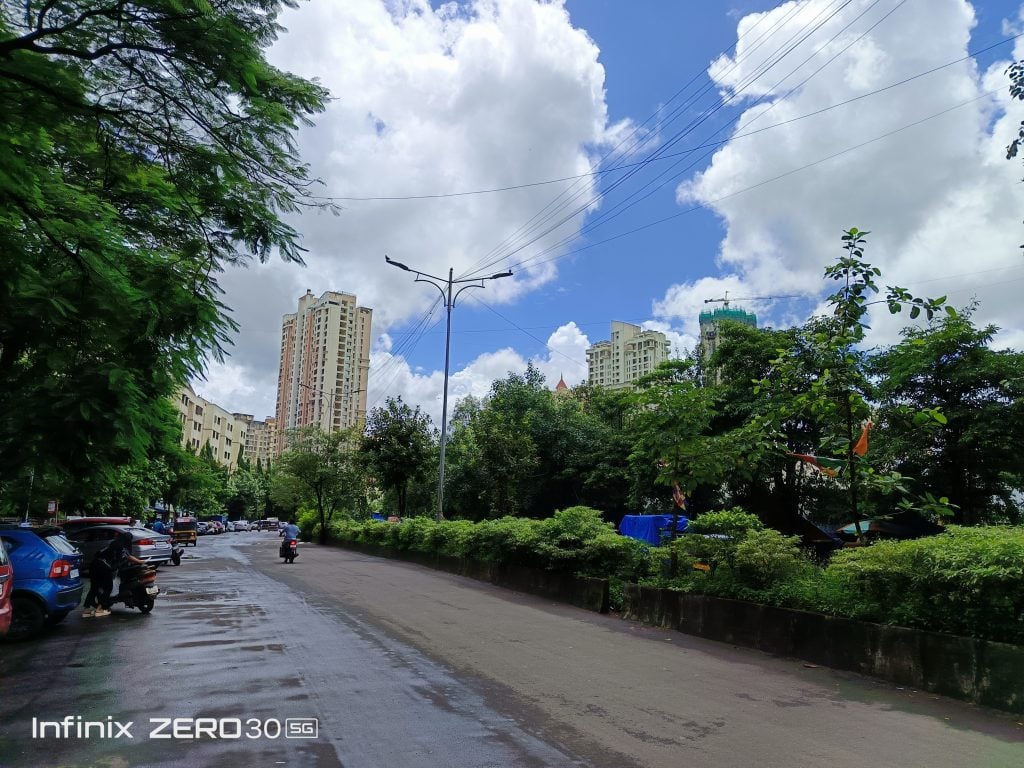
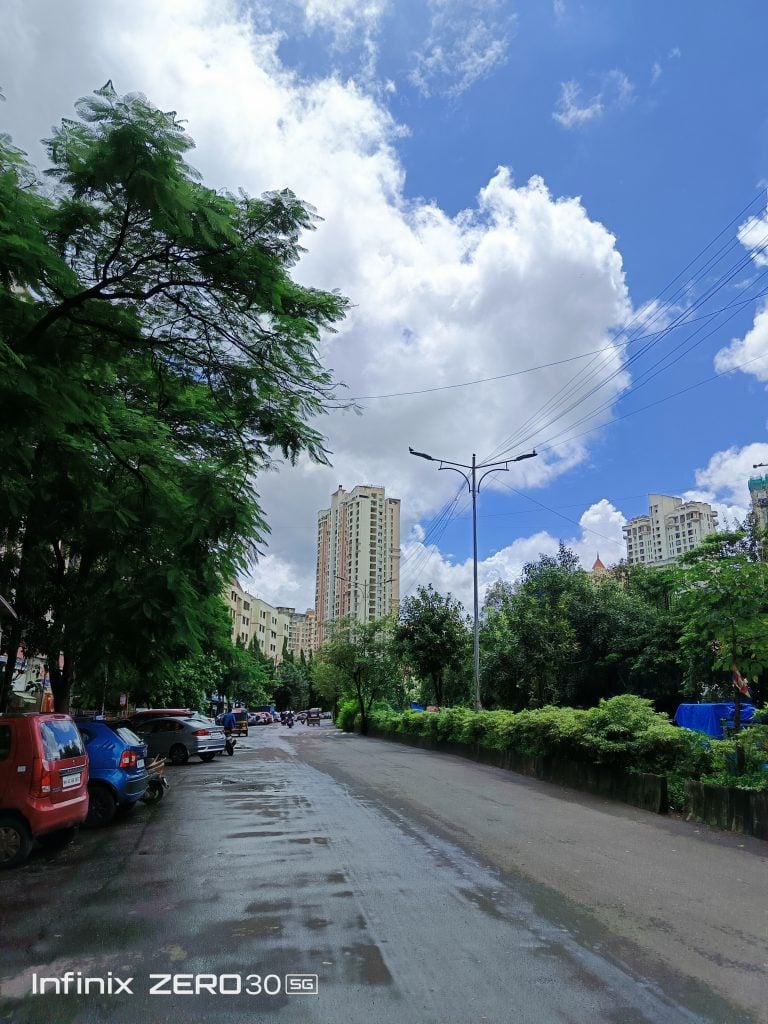
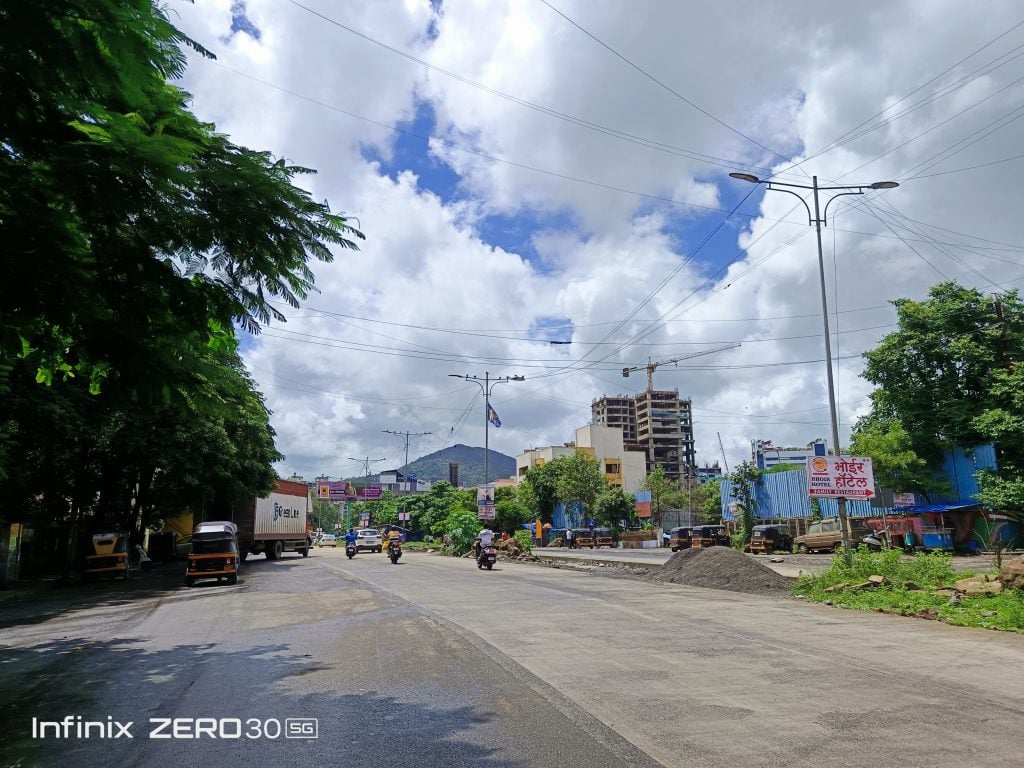
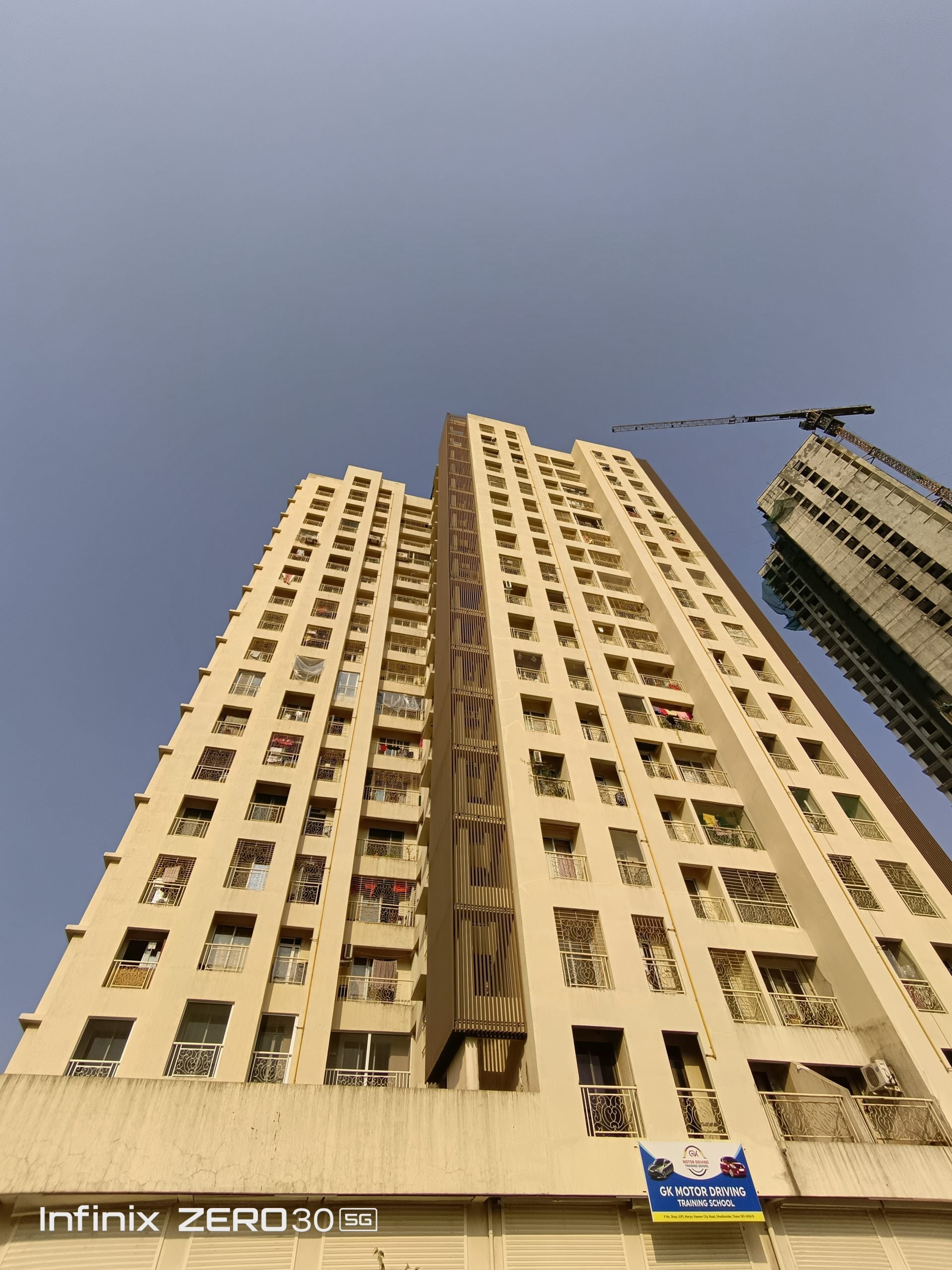
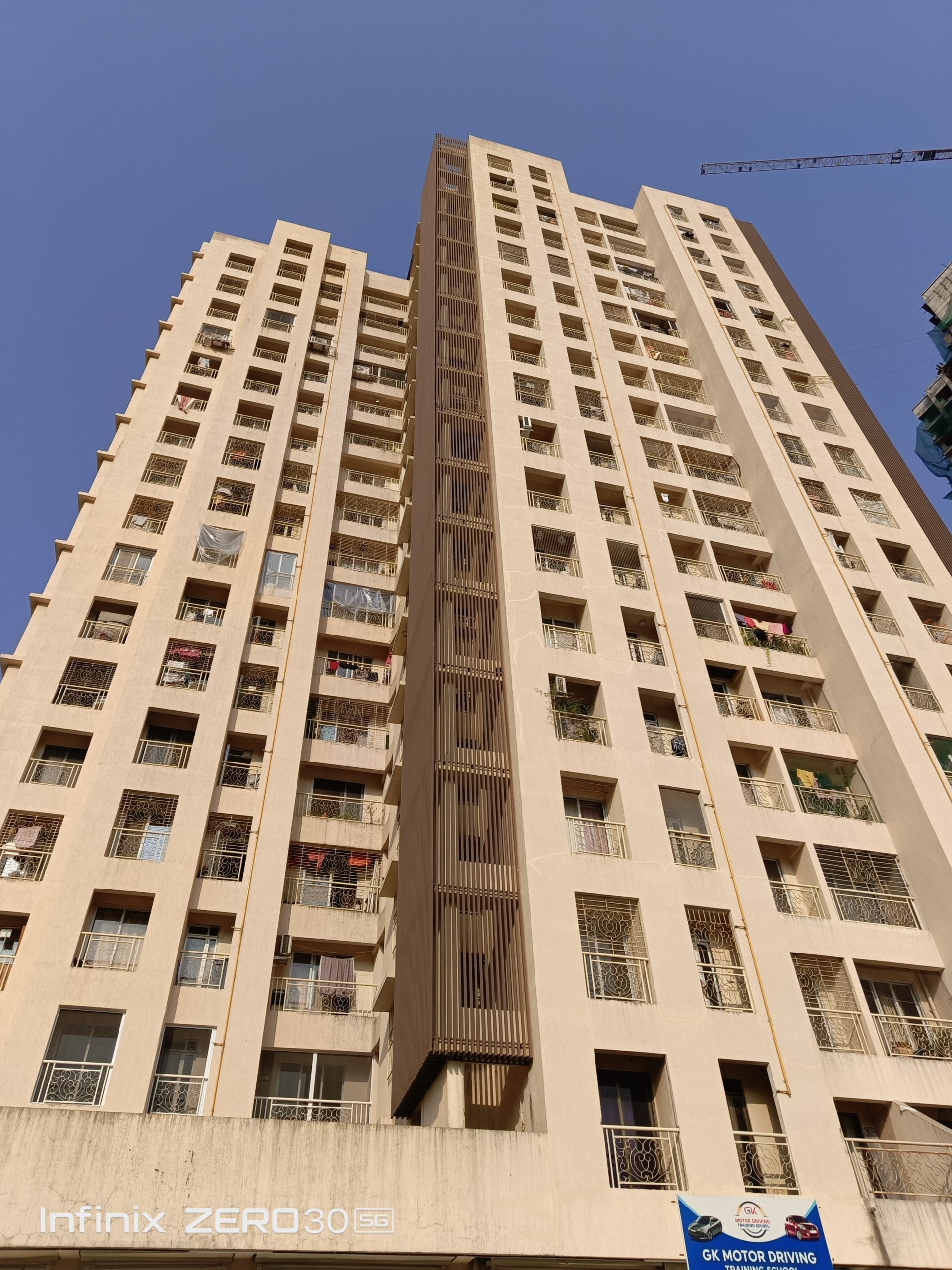
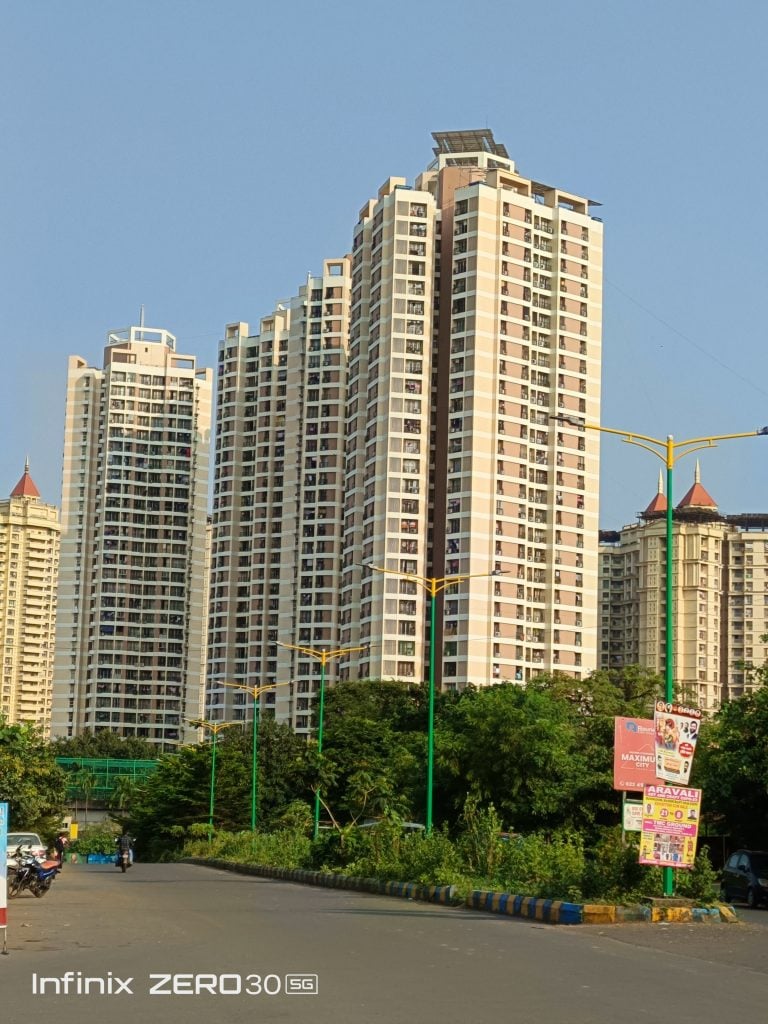
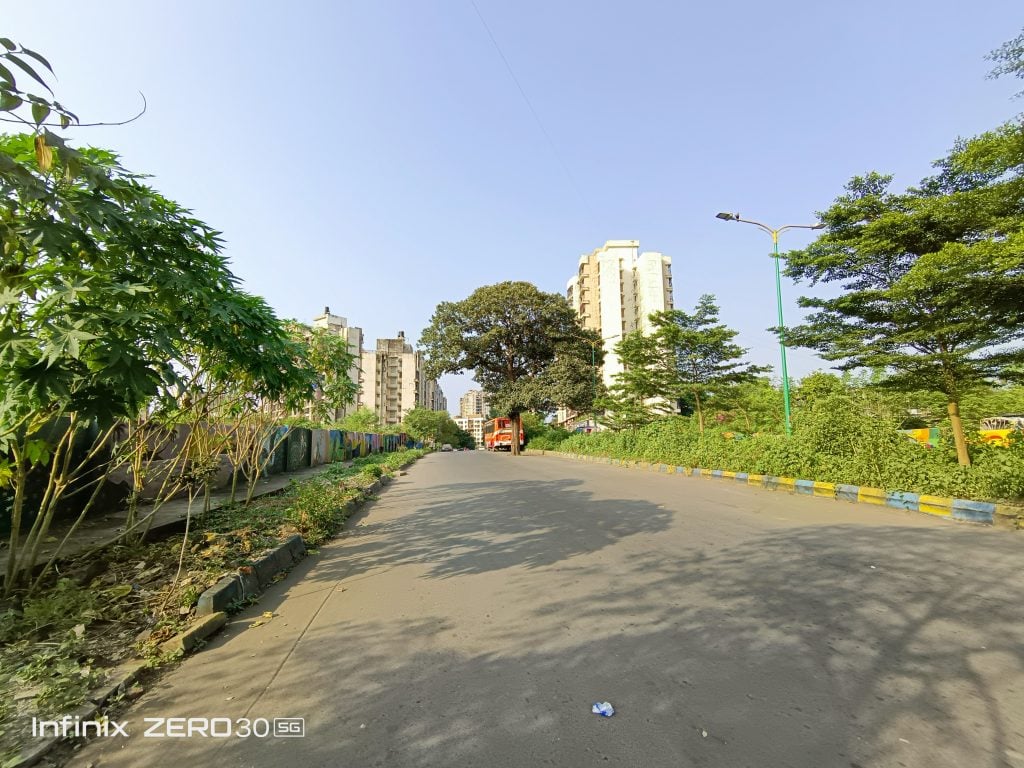
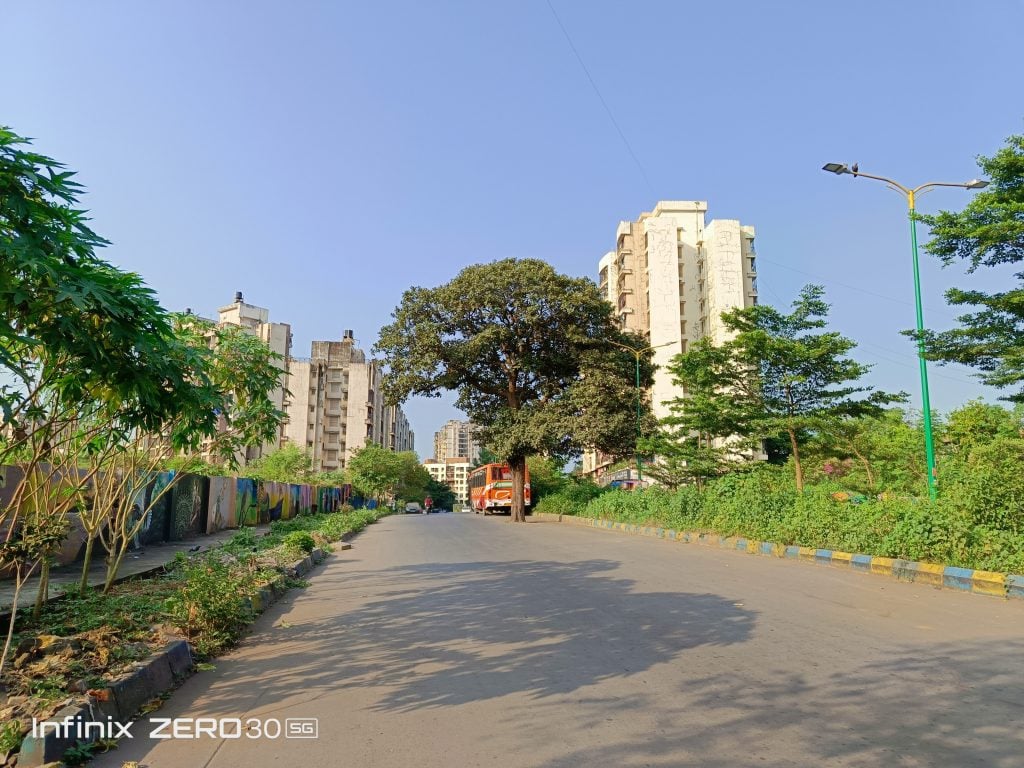

By default, the 108-megapixel primary camera captures shots in 12-megapixel resolution by merging 9 pixels into 1. It offers an f/1.7 aperture, 3x in-sensor zoom, and support for optical image stabilization. In daylight, the images come with accurate colors, and a wide dynamic range. Daylight images are mostly good, but some details seem to be lost when zoomed in. The main snapper also performs well in low-light conditions, with impressive colors and details. The Super Night mode adds some level of brightness to the main shots, but sometimes it may appear overprocessed. A lot of noise is seen when 3x zoomed shots are captured using the main camera in Super Night mode.
The edge detection is good when the Zero 5G’s portrait mode is in use for both humans and non-human subjects. The 13-megapixel ultra-wide camera also produces pleasing results in daylight, and the ultra-wide shots in low light are also passable.


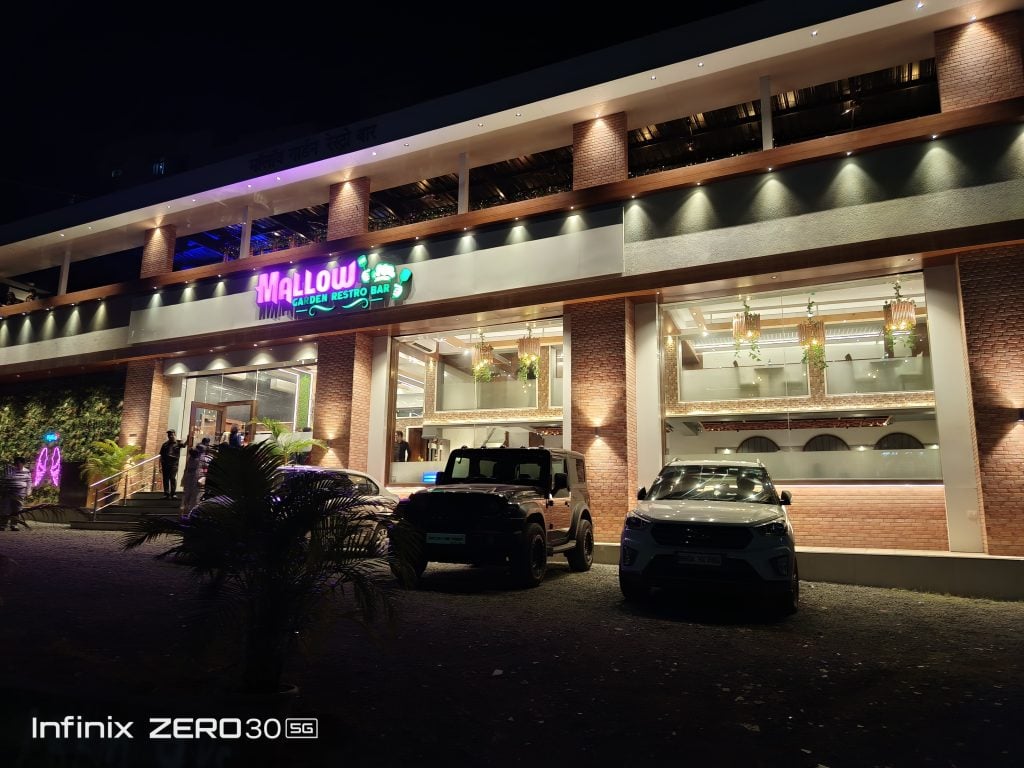

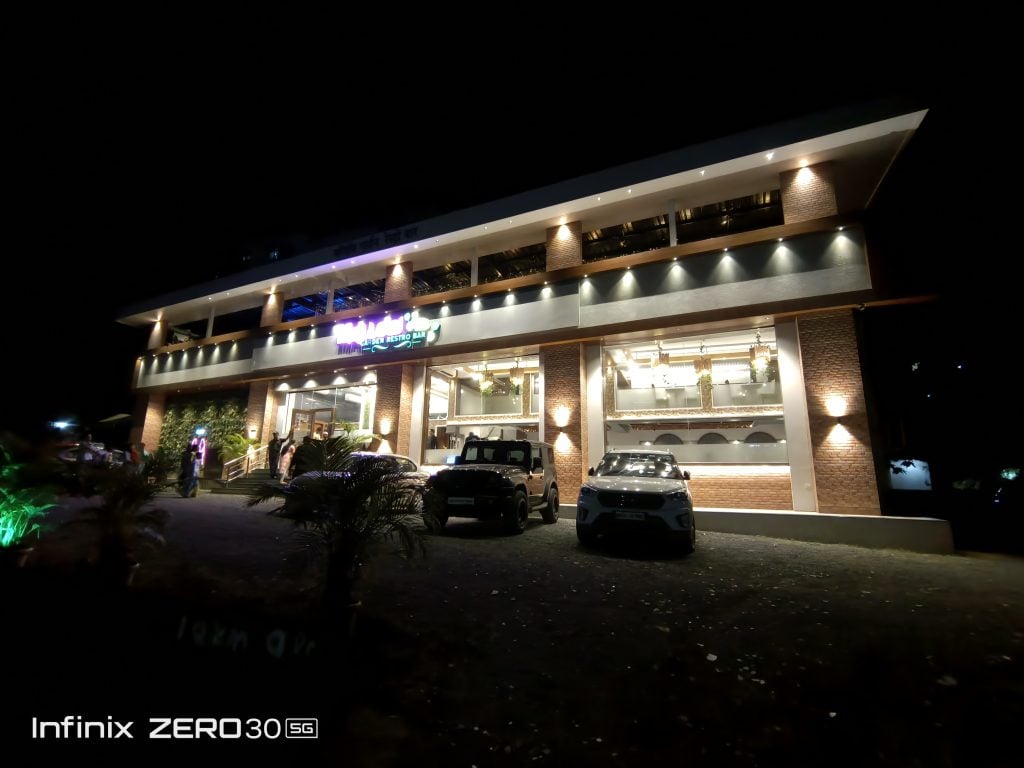
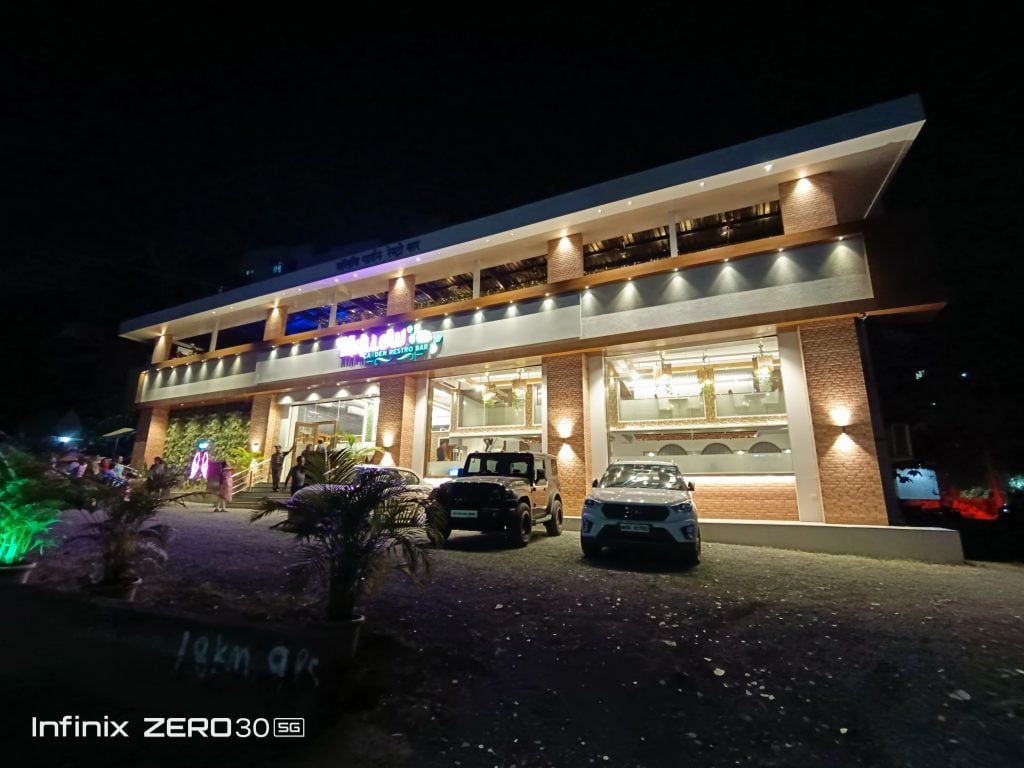


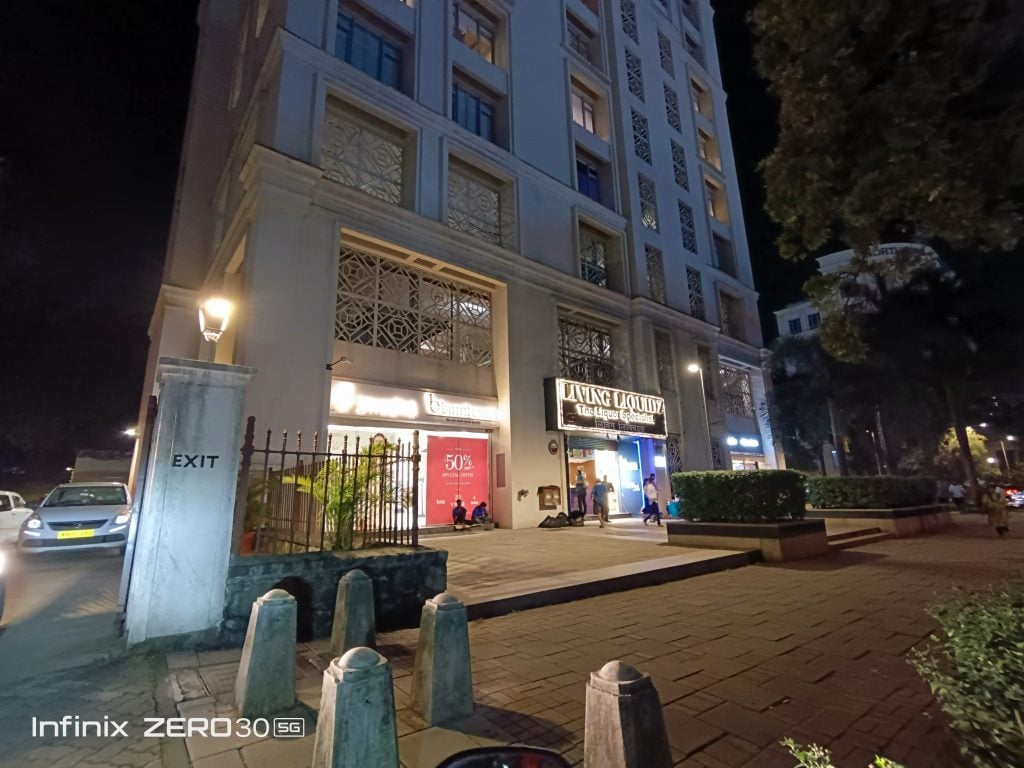

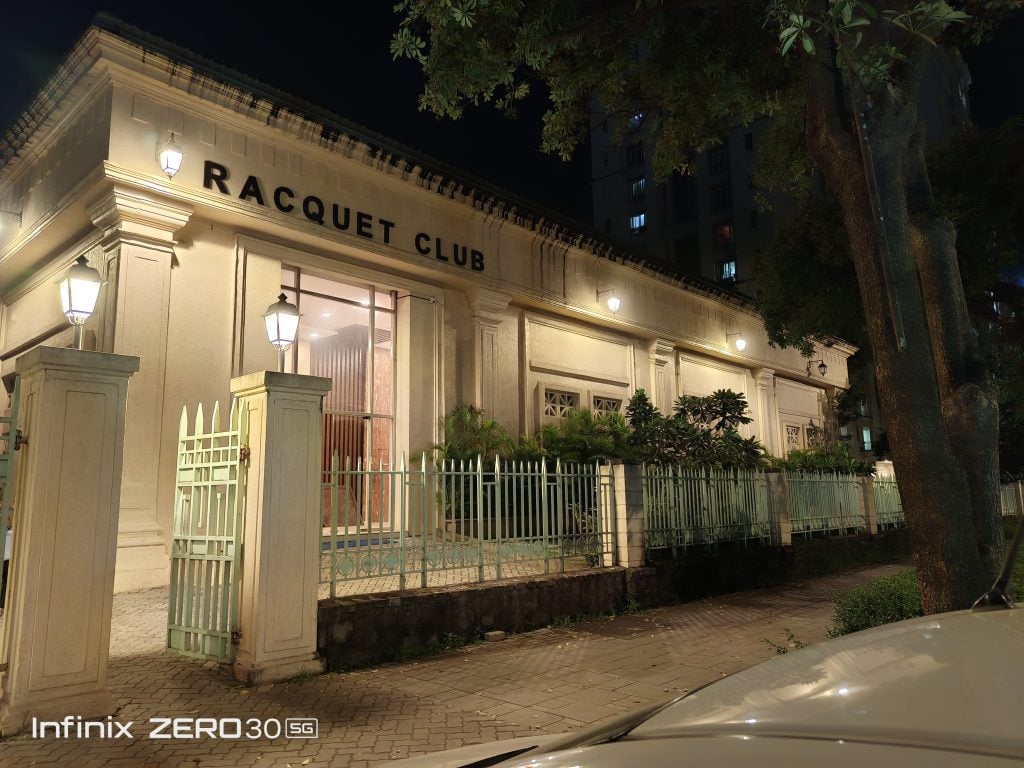
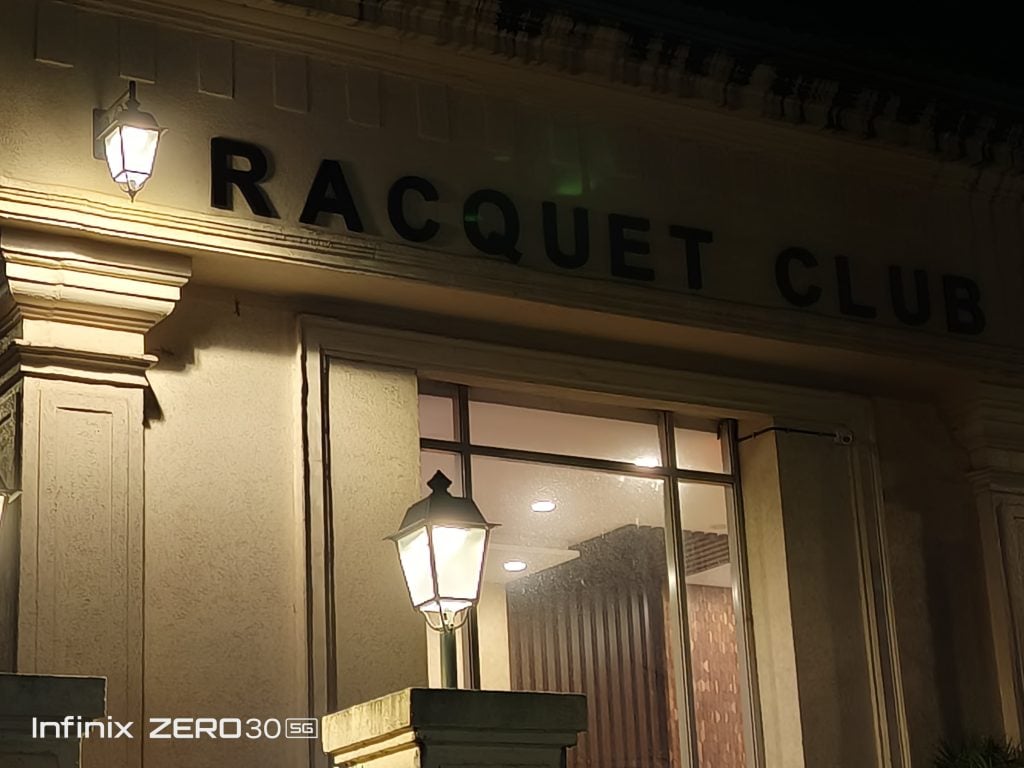

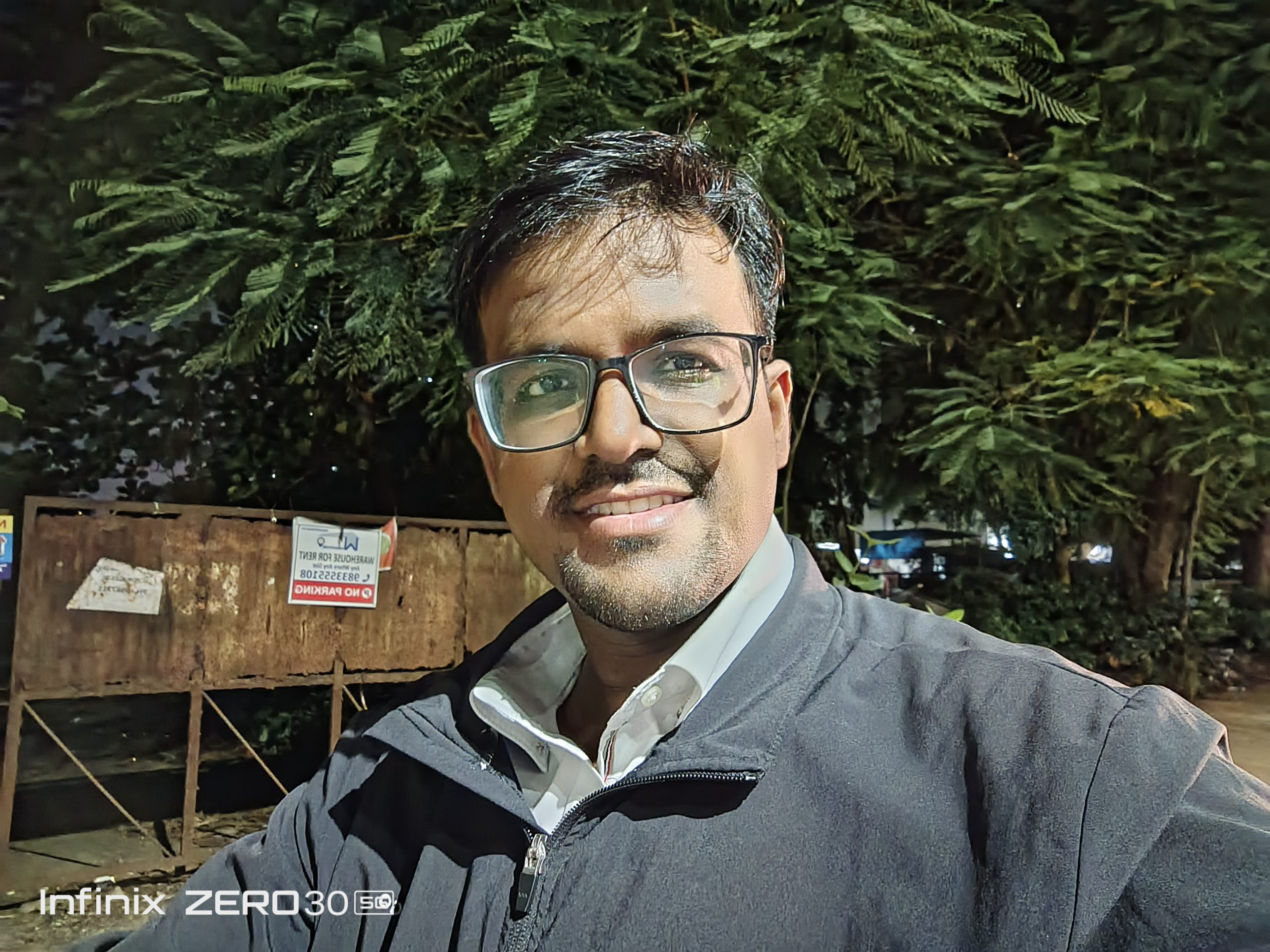

The 50-megapixel front camera captures 12.5-megapixel shots by default. There is a 50MP mode for a higher-resolution selfie shot. The front camera produces impressive selfie shots and portrait selfies with enough details, color reproduction, and subject separation. Eye autofocus tracking is a feature that allows the Infinix Zero 30 5G’s front-facing camera to automatically focus on the subject’s eyes. This can be useful for taking selfies, as it ensures that the subject’s eyes (while using spectacles) are always in focus, even if they move around. In low light, the selfie camera outputs decent results, appreciating skin tones when there is sufficient light. There is slight improvement in performance when the Super Night mode is used for selfies. The front flash is good for shooting selfies in very low light.
The 50-megapixel selfie camera as well as the 108-megapixel primary camera can shoot up to 4K videos at 60fps using the Zero 30 5G. The Ultra Steady EIS feature, video enhancement, eye auto-focus tracking, filters, AI makeup, and aperture settings for adding background blur effects are only available while recording 1080p videos at 30fps for both cameras.
The Infinix Zero 30 5G’s selfie videos exhibit impressive natural colors and perform adequately in low-light situations, albeit with some noticeable noise. These videos are captured using the main camera and offer sharpness, fine detail, good color accuracy, and a commendable dynamic range. However, video stabilization can be a bit unsteady, particularly in low-light conditions. Overall, the main camera’s video quality is satisfactory for the majority of users. Nevertheless, if you’re seeking the utmost video quality, you might want to explore higher-end smartphones. Additionally, the ultra-wide lens on the Infinix Zero 30 5G is capable of recording 4K videos at 30 fps with good clarity. Videos are sharp and detailed in good lighting conditions, but they can be blurry and noisy in low light.
The in-display fingerprint sensor operates at the expected speed, and the introduction of NFC is a valuable inclusion for convenient contactless payments. The dual stereo speakers deliver a well-balanced audio experience that enhances the movie-watching experience only when it is kept at 80 or 90 precent at the highest. Taking it 100 precent makes it sound too noisy and echoey. While the vibration motor may not be the most robust in its category, it provides reasonable feedback for activities such as typing, gaming, and receiving notifications. And yes, it lacks a microSD card slot and a 3.5mm audio jack.
Verdict

The Infinix Zero 30 5G offers a compelling package within its price range, boasting impressive camera capabilities, particularly its 50-megapixel front-facing camera capable of shooting 4K videos at 60fps, making it an ideal choice for vlogging enthusiasts. It also stands out with its eye-catching design, featuring a curved-edge display. Powered by the MediaTek Dimensity 8020 processor, it delivers solid performance, comparable to some Snapdragon 7-series chips. The device provides ample RAM and storage options, coupled with a long-lasting battery that supports rapid 68W charging. Furthermore, with a set of 108-megapixel triple rear cameras, the device is well-equipped for various photography needs. Overall, the Infinix Zero 30 5G is a well-rounded option that nearly fulfils all expectations in its price segment.
The Infinix Zero 30 5G has a lot of competition in its price segment, such as the Vivo T2 Pro 5G, iQOO Z7 Pro 5G, Motorola Edge 40 Neo, OnePlus Nord CE 3 Lite 5G, Realme 11 Pro, and Poco X5 Pro. The Vivo and iQOO phones pack the same specs and feature a more powerful chip, the Dimensity 7200, which is not a rebrand of an existing chip. However, in other aspects, the Zero 30 5G appears to be a better offering. The Edge 40 Neo has a smaller display and a weaker chip but offers good cameras, battery life, and an IP68 rating.
The Nord CE 3 Lite is a good offering, but it has an LCD panel and a comparatively weaker chip. The Realme 11 Pro’s Dimensity 7050 chip is inferior to the Zero 30 5G’s D8020 chip. However, in other aspects, it rivals well but lacks an ultrawide camera. The Poco X5 Pro is a major competitor for the Zero 30 5G as it carries a cheaper starting price of Rs 22,999.
Variants, Price and Availability
In India, the Infinix Zero 30 5G is available in the following variants
- 8 GB + 256 GB: Rs 23,999 (~$288)
- 12 GB + 256 GB: Rs 24,999 (~$300)
- Colors: Golden Hour, Rome Green
Disclaimer: All of the opinions in this Infinix Zero 30 5G review are mine and based on my own experiences. There has been no editorial input from Infinix.
RELATED:
- Infinix Zero 30 4G leaks revealing renders & specs, could launch soon
- Infinix W1 4K OLED smart TV launched in 55-inch & 65-inch options in India
- Infinix rolls out Android 13 update on Zero 5G, Zero Ultra & Zero 20
- Infinix Note 30 5G review: Nailing the price point with impressive specs
- Infinix GT 10 Pro vs Infinix Zero 5G: Specs Comparison

